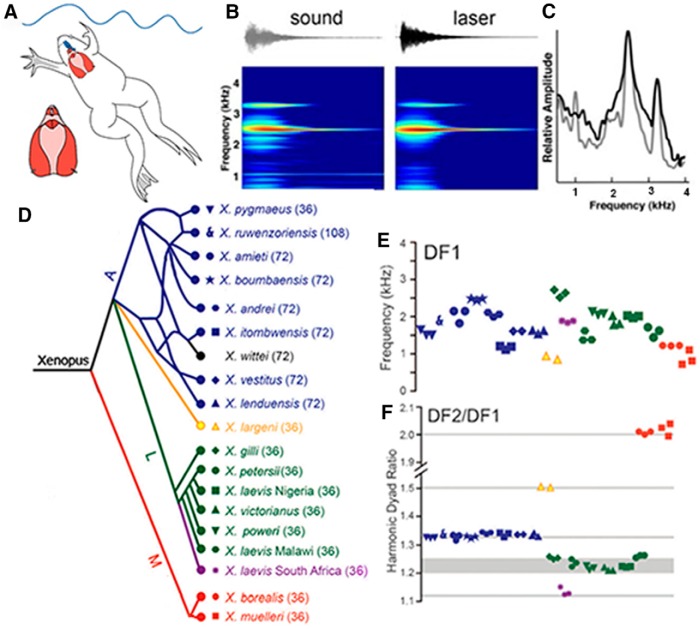Figure 6.
A, Advertisement calls were recorded underwater from vocalizing males or from the ex vivo larynx, at left. Note the relative sizes of the brain (blue) and larynx (red). B, A single sound pulse. Acoustic (gray) or laser inferometry (black) recordings reveal two dominant frequencies (C). D, Phylogenetic representation of species and populations from which advertisement calls were recorded, color-coded by clade (A, blue; L, green and purple; M, red and black). Ploidy levels for each species are in parentheses: 36 = tetraploid. Symbols correspond to individuals of each species in E and F. Updated according to Evans et al. (2019) for X. fraseri. E, Although both the lower DF1 and higher (data not shown) DF2 overlap across species, their ratios (F) are species-group. DF2–DF1 ratios and their harmonic intervals: 2.0 (octave), 1.5 (perfect 5th), 1.34 (perfect 4th), and 1.22,(minor 3rd), 1.25 (major 3rd). For X. itombuensis audio recording, see Movie 1. Modified from Kwong-Brown et al. (2019).

